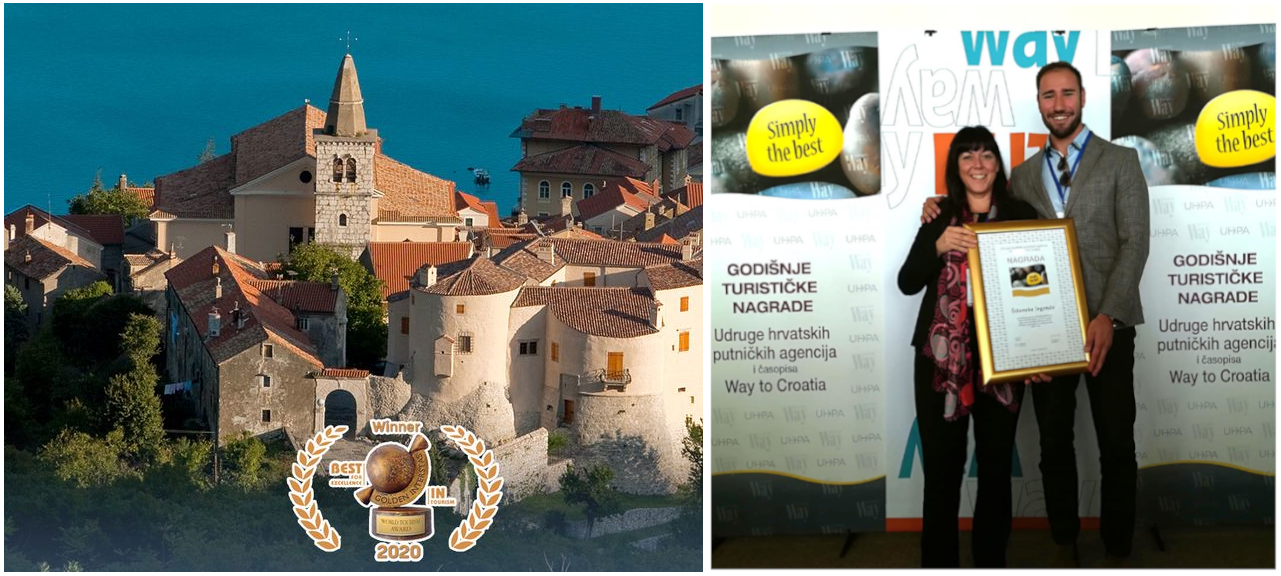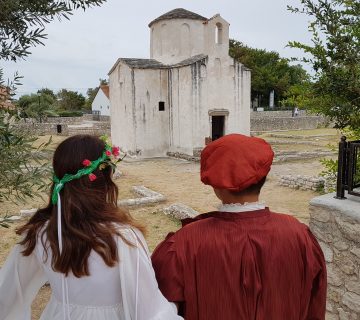Remember how we said to keep an eye on Bakar? Keep watching… and add Ližnjan and many other Croatian destinations to your watch-list!
In an article that I wrote for this newsletter more than two years ago with Silvija Jacić, my dear co-traveller on the path of personal and professional growth in the field of heritage interpretation, we pointed to the promising tourism development based on heritage interpretation in the Croatian town of Bakar.
Since then, between all of the achievements and steps towards further development, Bakar Tourist Board lead by its manager Sonja Jelušić Marić organised two Interpret Europe Certified Interpretive Guide courses, numerous interpretive walks and activities. Even this summer, when most of the destination management organisations found it impossible to deal with the Covid-19-related challenges, Bakar Tourist Board smoothly responded to the situation by turning its major traditional summer event into a set of interpretive walks and a few other cosy small-scale activities.
It would take us a few pages to list and briefly describe all of the interpretive and educational projects that the Bakar Tourist Board conducted over the past few years. One thing is for sure: This strange year brought Bakar’s efforts in heritage tourism into focus and Bakar Tourist Board recently received the Golden Interstas 2020 award for excellence in tourism. The International Commission of Tourist Journalists recognised Bakar Tourist Board’s efforts for its creative professional achievements in the presentation of the richness of its traditional values and culture despite the pandemic.
Bakar is not alone when it comes to recognition of excellence that has roots in a destination management’s confidence in heritage interpretation as a tool for better tourism. The tourist board of Ližnjan County in the Croatian region of Istria already received the Simply the Best award back in 2019 for the project Legends of Šišan. The Association of Croatian Travel Agencies and Way To Go magazine awarded the tourism board for its creative approach to education for heritage interpreters, used for creation of themed tours that significantly contributed to the tourism offer of the destination.
Indeed, Ližnjan County tourism board with its manager Natali Palko Zirdum has always been determined to include its incredible heritage in its tourism offer. This was also the first tourism board in the region of Istria to organise Interpret Europe’s CIG training and the first time that a tourism board manager took part in the training together with its stakeholders, which was one of its many steps towards a creative community and wonderful interpretive projects.
I will end this article with the similar words Silvija and I used in the article from two years ago: we only hope that the tourist boards of Bakar and Ližnjan will remain on this path and continue setting an inspiring example for many destinations on the rise. It will be interesting to follow the further development of Bakar and Ližnjan County as tourist destinations in the years to come. We should add to this count many other Croatian ‘interpretive tourism hubs’, such as Vrsar in Istria or the continental region of Central Podravina, and we would love to know if there are similar cases elsewhere in Europe where destination management and heritage interpretation go hand in hand – please, share your examples.
It will be interesting to observe whether heritage interpretation can really make a difference in the regenerative tourism to come. Who knows? Destinations like Ližnjan County or Bakar might be the beacons to lead the way.
Iva Silla is the author of Secret Zagreb tours (www.secret-zagreb.com) and the brand new Croatia Underrated podcast (www.croatiaunderrated.com). She is an experienced Interpret Europe CIG trainer. Contact her at: iva@secret-zagreb.com.
To cite this article: Silla, Iva (2020) ‘From interpretation to recognised excellence‘. In Interpret Europe Newsletter 4-2020, 20.
Available online: https://www.interpret-europe.net/fileadmin/Documents/publications/Newsletters/IE_newsletter_2020_4_winter.pdf




